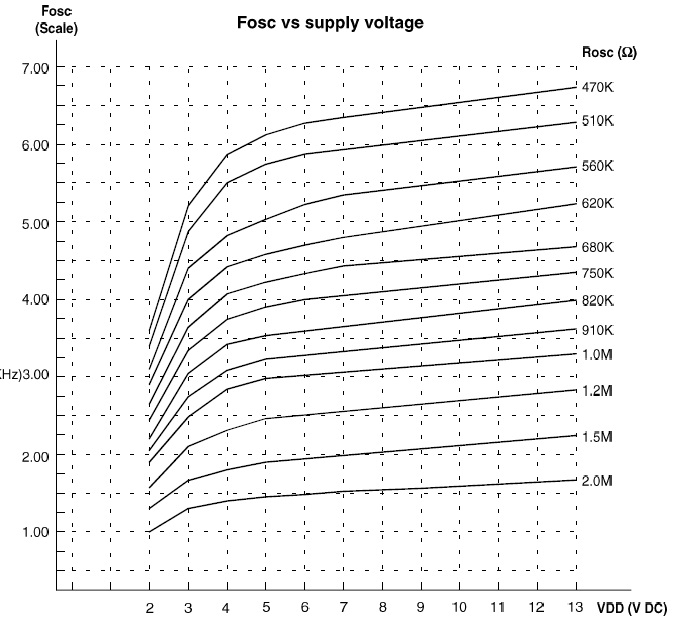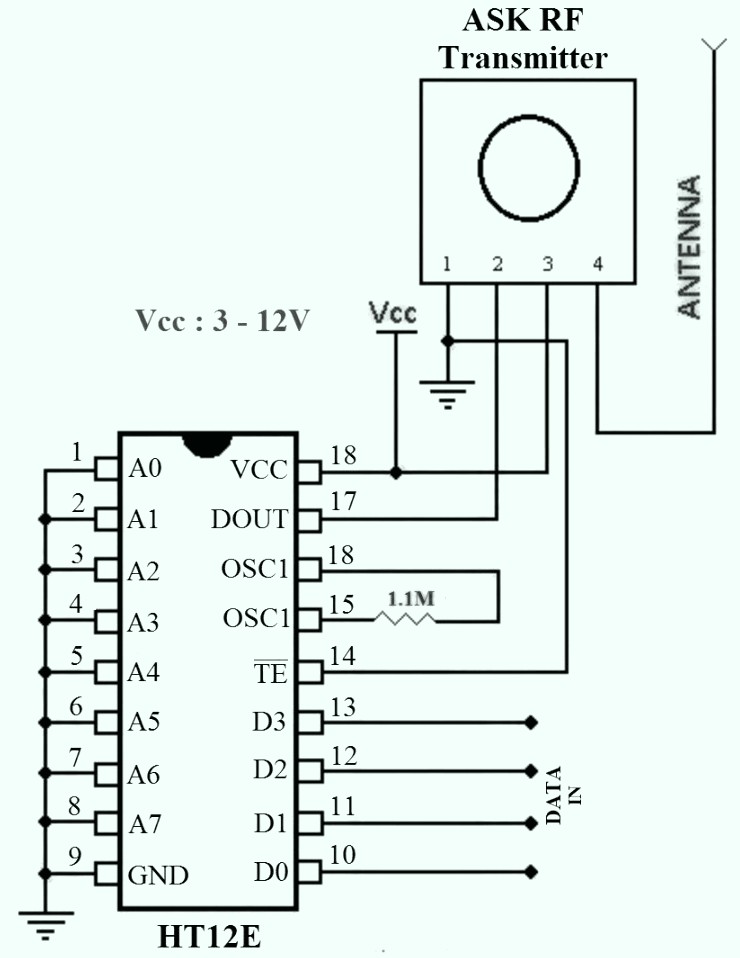HT12E is a 212 series encoder most commonly used in remote control applications. It contains totally 12 input pins in which 4 pins are used for data/address bits (AD8-AD11) and 8 pins for address bits (A0-A7) for safe transmission of data for security purposes.
The unique function of HT12E is to convert 12 bit parallel data inputs into serial data output (pin17) and then it is modulated and transmitted using the RF transmitter module. The power consumption is very low and the standby current is 0.1µA at5V.

HT12E has a transmission enable pin which is active low.

When a trigger signal is received by TE (pin14), the addresses/data are transmitted together through an RF transmitter module. HT12E is a 4 word transmission cycle enables. This cycle is repeated again and again till TE is kept low. When TE returns to high, the encoder has completed its last cycle and then stops. (You can also refer the following flow chart for clear view on transmission enable, which is active low).

The positive and negative of the power supply is fed into HT12E via VDD and VSS respectively.
For the internal oscillator, an external resistance is connected in between OSC1 and OSC2 finally it forms an RC oscillator.

You may raise a question on how to choose the resistance value?
Well, for the selection of resistance refer the below graph between the frequency of oscillation and the power supply.

How the Digital Serial Data gets transmitted from TRANSMITTER to the RECEIVER?
Here we go, it is very simple to transmit a serial digital data through RF transmission and the technique used here is Amplitude Shift Keying.

In amplitude shift keying the digital serial data are represented in amplitude of the carrier wave.
The serial output DOUT is given to ASK transmission and one important thing is the transmitter address should match the receiver address. It helps the receiver to receive the RF signal and then decode it.












